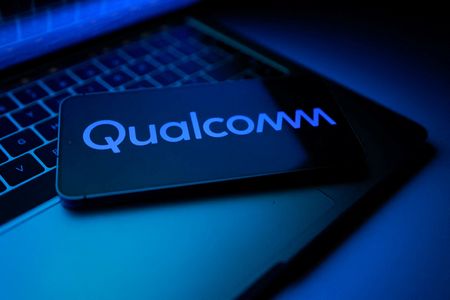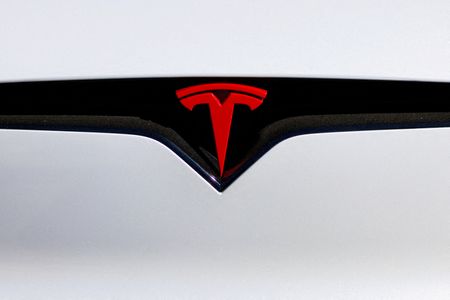By Stephen Nellis and Max A. Cherney
SAN FRANCISCO (Reuters) -Qualcomm has shifted its flagship chips to the latest generation of Arm Holdings’ computing architecture with new features aimed at better AI performance, sources familiar with the matter said, a move that could boost Arm’s revenues and help Qualcomm’s chips compete against offerings from MediaTek and Apple.
The decision at least partially settles a question of whether and how Qualcomm would continue to work with Arm technology, following an acrimonious legal battle between the two last year, and the move is likely to raise revenue for Arm which charges more for the newer tech.
San Diego, California-based Qualcomm last week introduced a new generation of PC and phone chips. Unlike previous generations, two sources familiar with the matter said Qualcomm’s new chips will use the ninth version of Arm’s computing architecture, called “v9” in the industry, which includes several improvements aimed at helping chips handle tasks from chatbots and image generators better.
Qualcomm rivals such as MediaTek, which has at times eclipsed Qualcomm’s market share for mobile phone chips, has publicly confirmed its use of Arm’s v9, and most analysts believe Apple uses it, too. The technology is called an instruction set architecture, a fundamental technology that controls what kind of apps can run on a central processing unit (CPU).
Qualcomm declined to comment on what technology it used for its newest chips but said in a statement that “we chose the instructions that make sense for our customers. That’s the beauty of having our own CPU design team – we can pick and choose the instructions that add value.”
Arm declined to comment.
While Arm faces competition from newer rivals such as RISC-V, an open chip standard that is free to use, that technology is decades less mature than Arm’s and has a smaller software developer base. Qualcomm also could have elected to stick with a previous generation of Arm technology, as it did with chips announced last year.
How much Qualcomm’s move could bolster Arm revenue is difficult to calculate because Qualcomm licenses Arm’s computing architecture but designs much of its chip itself rather than buying design elements off the shelf from Arm, said Jay Goldberg, senior analyst for semiconductors and electronics at Seaport Research Partners.
But the move is remarkable because of the legal battle, which has not completely ended, Goldberg said. Less than a year ago, Arm had threatened to cancel a key license to Qualcomm, though it later rescinded that threat.
“That’s very positive for Arm,” Goldberg said of Qualcomm’s reported move. “These are companies that were fighting each other. Qualcomm could have gone a very different path here.”
(Reporting by Stephen Nellis and Max Cherney in San Francisco; Editing by Stephen Coates)










